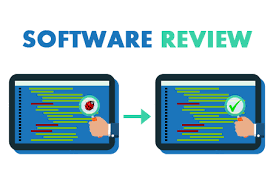This is an article printed in Position magazine in June 2018
A properly run Government or council tender should be focused on selecting the most cost-effective solution for goods and services in a transparent and accountable manner, since public money is being spent. If proper tender processes are not followed there can be severe and painful consequences from bodies such as ICAC (the Independent Commission Against Corruption) in NSW, as several councils have recently discovered the hard way.
So while it is important that the tendering process is fair, it must also be seen to be fair. One of the best ways of doing this is to ensure that the winning tender is demonstrably the best outcome to all involved. Ideally, losing vendors should accept that the winner really has won and that their product or service is the best outcome. The losers must also accept that they have lost, and the best way to do this is to show them the evidence of their loss at the end of the tender, which reduces the likelihood of their objection.
This is also called the Bradbury approach (so named after Steven Bradbury who won an Olympic gold medal in ice skating in 2002 when all of his competitors fell over). That is, select the losers and the one left standing hopefully becomes the winner.
And as incredible as it seems, this approach is often helped when the vendors inadvertently position themselves as one of the losers, which occurs frequently – and often by companies who should know better.
So why do vendors do this? Glaring examples include: giving false references (as if we wouldn’t check), failing to complete key pricing schedules, and amazingly – not bidding at all, but still expecting to win.
Some proposed theories:
- They don’t understand the process, or they hold a perception that the process does not apply to them.
- They don’t take the tender process seriously: “we have already won and are just going through a formality”.
- They believe their own propaganda, or hold that because they are a large international vendor that the rules don’t apply to them.
- They don’t understand the capabilities of their competitors, perhaps because they have no direct experience with that software, so specific requirements are treated with a flippant “why would you want that” approach.
A good example is a recent GIS tender that I ran for a large Sydney council. The 18 companies who responded to the Expression of Interest were culled to five, who were considered to have the depth and breadth of products and services required to meet the specification. These five companies were invited to respond to the detailed Request for Tender document.
- Company A was a large Australian company who had considerable experience in GIS as well as Asset Management and Financial systems. They bid their own software with applications meeting most of the tender requirements. The tendered price was about $330k.
- Company B was an overseas Value Added Reseller (VAR) biding a large international vendor’s software with extensive development of specific applications. The tendered price was about $850k.
- Company C was a local VAR bidding the same large international vendor’s software as was Tender B, but for considerably less application development. The tendered price was about $430k.
- Company D was the incumbent GIS. They failed to read the tea-leaves that the reason the council was going to tender was to get rid of their system, because their software was not meeting council’s functional requirements and their support was terrible.
- Surprisingly Company E, one of the biggest vendors in the GIS marketplace, declined to bid, saying they were too busy and that they shouldn’t have to respond to a tender anyhow because they were “simply the best”. In believing their own propaganda, the sales rep said that the council should know they were the best and just award the contract to them. Obviously that didn’t happen.
So what did happen?
Company E didn’t bid so they were out, but were arrogant enough to complain that they should have got the contract.
Company D were never going to win. There would have been a mutiny if anyone suggested that their tender response be taken seriously given that their product was known to not meet council’s requirements.
Company B and C were both bidding the same identical product, but B was almost double the price of C mainly because Company B had included over 1,300 days of software development for functionality which I knew already existed in the GIS software. Company C had bid 40 days for development which seemed reasonable, given that they were both bidding a well-known and mature product. Needless to say, Company B’s huge software development cost simply highlighted that they didn’t understand the product they were bidding. Consequently, they didn’t make the cut for further consideration.
So that left us with Company A and C to evaluate as serious contenders. Prior to the tender evaluation, the evaluation team developed a number of business process tests so that we could see how the GIS would work in real life. This was vitally important because if selected, the GIS had to perform using spatial and asset data on actual council business processes.
Each company demonstrated their solutions by working through the scenario tests. Company C went first and while their solution was competent, it was difficult to use and was exacerbated when the demonstrator (being a technical type) decided to show everyone how to write an SQL script while he was doing an address search. So a simple, 10 second query took over 15 minutes and confused everyone in the room. The end result was that a number of the council staff said to me in the break “no way am I doing that every time I have to do a simple property search”. The representative later belatedly tried to explain to the audience that they wouldn’t have to do this every time they wanted to do a property search, but by then the audience had switched off and weren’t listening – the damage had been done.
Then Company A did the scenario tests and demonstrated their products impressively and with time to spare. They focused on the scenario scripts and showed everyone how their solution would make their business run more smoothly. Company A had the best technical solution, but the evaluation process was made a lot easier because the other 4 companies set themselves up to lose:
- Company B’s response highlighted their lack of product knowledge
- Company C’s response was credible but was badly demonstrated by staff who had poor product knowledge – the same staff who would later provide product support
- Company D’s GIS was known to not have the capability required and had very poor support
- Company E did not bid
So Company A “did a Bradbury” because everyone else set themselves up to lose. Company A also had the cheapest price, a proven track record and good local support. Therefore it became a “no brainer” to award the contract to Company A.
Lastly each of the losing Companies were invited to a debrief session to discuss why they had lost (not why Company A had won). Because the evidence of their loss was specific and demonstrable, there were no complaints. This highlighted that the tender process is as much about gathering specific reasons for each loser losing, as it is about selecting the winner.
At the end the tender, the council IT Manager publicly said that “…the development of a specification for a replacement GIS and the evaluation process resulted in a great outcome for council.”



